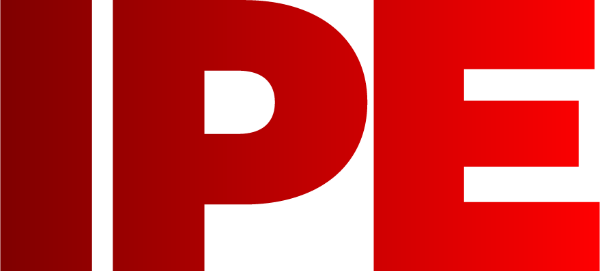

|
Edward Lowton
Editor |


|
| Home> | Energy Management | >Boilers and burners | >Buyers beware |
ARTICLE
Buyers beware
25 January 2013
Many energy-saving strategies include retrofitting new technologies to existing plant to improve efficiency.Tony Willis, technical sales director at Sabien Technology, explains why it's important to adopt a careful evaluat

Many energy-saving strategies include retrofitting new
technologies to existing plant to improve efficiency.Tony
Willis, technical sales director at Sabien Technology, explains
why it's important to adopt a careful evaluation strategy
When planning a strategy to reduce energy consumption and carbon emissions, it's common to include both short-term and long-term projects to achieve ongoing improvements.Within the short-term phase, retrofit technologies often offer relatively quick energy-savings with a quick return on investment.
However, as a result of the significant investment by organisations in energy efficiency - the so-called green pound - there are a number of technologies on the market that seek to exploit the situation without delivering what they promise.
Consequently, it is essential to carry out a thorough evaluation of any technologies under consideration to ensure they delight rather than disappoint. And unfortunately many such solutions are based on unproven theories, or they may be technologies that have failed in the past but been reincarnated with a new look backed by new spiel.
Boiler dry cycling is a case in point, where boilers fire to replace the heat lost through standing losses rather than in response to a genuine demand for heat from the building.
This is a problem that is found in the majority of boilers. Building management systems (BMSs) and weather compensation, are not typically configured to address it.
There have been many attempts to address boiler dry cycling in the past but early technologies typically either delayed firing of the boilers irrespective of the actual demand for heat, or altered firing patterns based on historical data rather than real-time activity.
Both methods compromise performance levels, alter designed set points and often interfere with other controls installed on the system.
So a solution that genuinely addresses boiler dry cycling without adversely affecting the performance of the system must work in harmony with other controls, such as a BMS or weather compensation.
This example clearly illustrates the importance of asking some searching questions about any technology you are considering deploying. For instance, does the claimed method of operation actually make sense in engineering terms and can the supplier explain how it works in simple terms. Also, has the technology been proven through independent testing in other projects in the field? Will the manufacturer encourage you to talk to other users to gain the benefit of their experience? On top of these considerations is the potential for disruption of any retrofit project - something that deters many building operators from taking advantage of such energy-saving opportunities. The supplier of the retrofit technology should be able to help with this, managing the entire project and taking care of communications with each of the sites and all stakeholders.
Again, talking to that supplier's other users will give a good idea of their project management capabilities.
Very often there will also be a desire to evaluate the success of a quick fix project, calculate the actual payback and see if it delivers the predicted return on investment.
So it's important that appropriate ways of measuring the energy consumption before and after are in place. And in the case of any heating systems, where weather fluctuation impacts on energy consumption, the supplier should be able to compensate for such variation to deliver meaningful comparisons. In this case, by using 'degree day data' provided by the Meteorological Office.
Armed with this logical approach it is possible to achieve significant energy savings and deliver a sensible return on investment.
In the boiler dry cycling example, for instance, installation of an intelligent boiler load optimiser that satisfies all of the criteria above will typically reduce gas consumption by between 10 and 25%, with a payback of less than two years. That's the sort of saving that rewards a diligent approach to the selection of retrofit solutions.
When planning a strategy to reduce energy consumption and carbon emissions, it's common to include both short-term and long-term projects to achieve ongoing improvements.Within the short-term phase, retrofit technologies often offer relatively quick energy-savings with a quick return on investment.
However, as a result of the significant investment by organisations in energy efficiency - the so-called green pound - there are a number of technologies on the market that seek to exploit the situation without delivering what they promise.
Consequently, it is essential to carry out a thorough evaluation of any technologies under consideration to ensure they delight rather than disappoint. And unfortunately many such solutions are based on unproven theories, or they may be technologies that have failed in the past but been reincarnated with a new look backed by new spiel.
Boiler dry cycling is a case in point, where boilers fire to replace the heat lost through standing losses rather than in response to a genuine demand for heat from the building.
This is a problem that is found in the majority of boilers. Building management systems (BMSs) and weather compensation, are not typically configured to address it.
There have been many attempts to address boiler dry cycling in the past but early technologies typically either delayed firing of the boilers irrespective of the actual demand for heat, or altered firing patterns based on historical data rather than real-time activity.
Both methods compromise performance levels, alter designed set points and often interfere with other controls installed on the system.
So a solution that genuinely addresses boiler dry cycling without adversely affecting the performance of the system must work in harmony with other controls, such as a BMS or weather compensation.
This example clearly illustrates the importance of asking some searching questions about any technology you are considering deploying. For instance, does the claimed method of operation actually make sense in engineering terms and can the supplier explain how it works in simple terms. Also, has the technology been proven through independent testing in other projects in the field? Will the manufacturer encourage you to talk to other users to gain the benefit of their experience? On top of these considerations is the potential for disruption of any retrofit project - something that deters many building operators from taking advantage of such energy-saving opportunities. The supplier of the retrofit technology should be able to help with this, managing the entire project and taking care of communications with each of the sites and all stakeholders.
Again, talking to that supplier's other users will give a good idea of their project management capabilities.
Very often there will also be a desire to evaluate the success of a quick fix project, calculate the actual payback and see if it delivers the predicted return on investment.
So it's important that appropriate ways of measuring the energy consumption before and after are in place. And in the case of any heating systems, where weather fluctuation impacts on energy consumption, the supplier should be able to compensate for such variation to deliver meaningful comparisons. In this case, by using 'degree day data' provided by the Meteorological Office.
Armed with this logical approach it is possible to achieve significant energy savings and deliver a sensible return on investment.
In the boiler dry cycling example, for instance, installation of an intelligent boiler load optimiser that satisfies all of the criteria above will typically reduce gas consumption by between 10 and 25%, with a payback of less than two years. That's the sort of saving that rewards a diligent approach to the selection of retrofit solutions.
MORE FROM THIS COMPANY
OTHER ARTICLES IN THIS SECTION

















